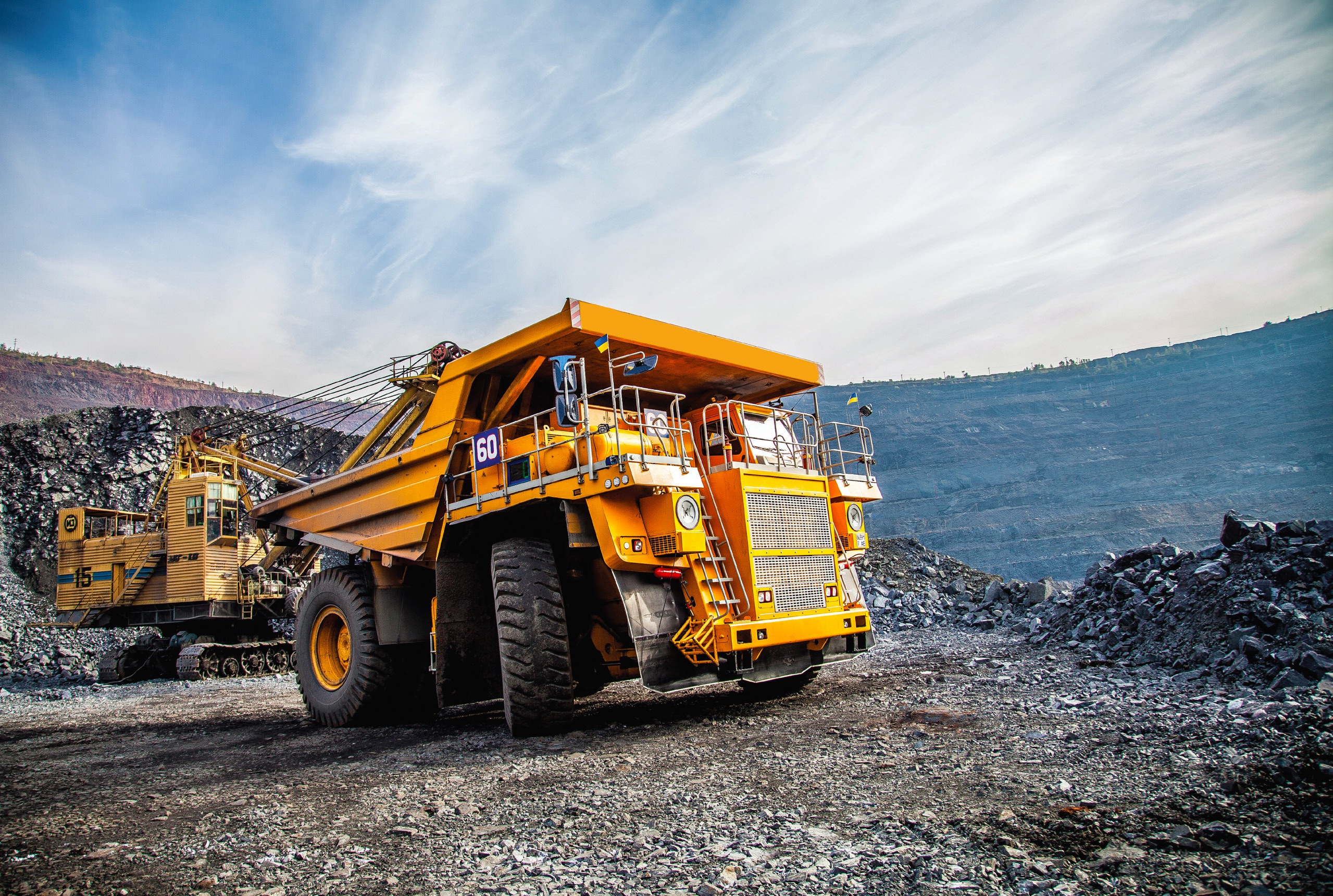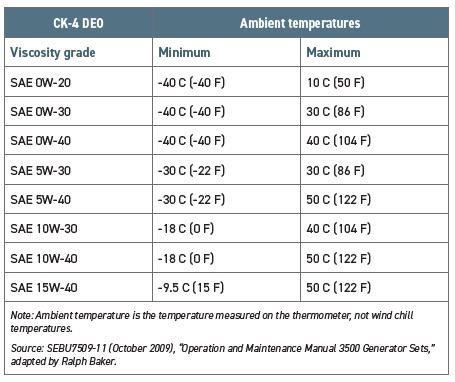Lighter grade oils and off-highway vehicles
Andrea R. Aikin, Contributing Editor | TLT Lubrication Fundamentals July 2021
Acceptance of lighter grade oils in industrial applications is growing.

KEY CONCEPTS
• While start-stop technology is relatively new, it stresses engine components and creates challenges for new engine oils to meet.
• Tighter engine architecture has resulted in the need for thinner lubricants.
• With today’s engines required to run hotter for longer, protecting the engine at all times and in all conditions is important.
Lighter diesel engine oils with viscosity grades like SAE 10W-30 or SAE 5W-30 are popular for on-highway vehicles. This has drawn attention to whether these lighter grades might be appropriate for off-highway vehicles (i.e., mining, drilling, construction), which have traditionally used heavier oils (e.g., SAE 15W-40) to achieve a better cold start. These lighter oils have the potential to provide better cold start and offer better fuel economy while still providing the same solid wear protection, especially for engines operating in cooler ambient temperature conditions.
STLE member Ralph Baker, technical instructor with Finning (Canada) in Edmonton, Alberta, Canada, notes, “There has been a noticeable and documented viscosity shift in on-highway engine oils away from an SAE 40 product (i.e., 15W-40, 5W-40) toward an SAE 30 multigrade product (i.e., 10W-50, 5W-30).” The mining, drilling and construction customers operating in cooler ambient temperatures are gradually shifting to the lighter SAE 30 multigrade oils as well.
Trends for heavy-duty diesel engine oil
Darryl Purificati, an OEM technical liaison with HollyFrontier Lubricants & Specialties in Mississauga, Ontario, Canada, notes, “Lubricants have evolved to address the challenges and requirements of modern heavy-duty vehicles and their engines.” As an example, Purificati says, “Newer engines run at higher temperatures, which can stress conventional lubricants, meaning that oils need to be more resistant to oxidation and more durable to prevent wear.” Start-stop technology is relatively new, but it also adds stress to engine components and creates more challenges for engine oil.
Baker notes several factors relevant to engine and lubricant design:
• When designing a fluid-supplied bearing joint, or other engine splash gravity lubricated joint, the choice of oil viscosity that will be made available to that joint is critical.
• The calculation of the oil cooling and cleaning flow rate that will be flowing through the joint also is important.
• The oil viscosity made available to the bearing joint also determines the bearing joint journal’s roughness, as it is this roughness that pulls or meters the fluid through the bearing joint.
Baker notes, “The selected or calculated journal surface roughness and the actual fluid viscosity must work together.” In other words, an increase in journal roughness will require an increase in viscosity, or a joint design that permits the use of lower viscosity fluids at a higher ambient temperature requires a smoother surface finish. The joint’s fluid requirements are determined by the actual joint design.
Baker says that the operation of an engine in an ambient condition of 40 C to 50 C requires an SAE 40 multigrade product (15W-40), while the same engine operating in a 25 C to 40 C ambient condition requires an SAE 30 multigrade product (10W-30). Despite the temperature differences, Baker says, “The actual viscosity of the oil running in the two operational temperature windows is basically the same.”
In other words, Baker finds that “as the engine’s ambient operating temperature decreases, there is a corresponding increase in the actual engine oil viscosity within the joints.” In order to counter this increase in viscosity as ambient temperature drops, the oil viscosity recommended for the engine changes from an SAE 40 multigrade product to an SAE 30 multigrade product to an SAE 20 multigrade product. Baker says, “This change in viscosity with ambient temperature decrease also assists in maintaining engine efficiencies.”
Purificati says, “API CK-4 and FA-4 oils offer greater resistance to oxidation, as well as improved aeration control and shear stability.” Lubricants that meet these viscosity and performance standards offer modern engines enhanced protection and improved fuel economy, as well as the potential to safely extend oil drain intervals. The changes these lubricants bring to engine operation can result in engines being operational for longer periods between oil changes, which reduces scheduled maintenance costs.
Recently, “The trend toward low viscosity lubricants has gathered pace,” notes Purificati. The drive to improve fleet performance, while reducing fuel consumption, has driven these changes. In addition, modern engine architecture also has led to changes as “tighter clearances require thinner lubricants that can flow easily around the engine, which is a key factor in the transition toward lower viscosity lubricants.”
Purificati adds, “Operators look to lower viscosity engine oils, like SAE 10W-30 oils, to improve fuel efficiency.” Low viscosity engine oils reduce viscous drag on moving parts, which means they can flow more efficiently through an engine than heavier oils. This reduction in viscous drag helps reduce parasitic losses and improves fuel economy, while also reducing the amount of time required to lubricate the engine. The OEM suggestions for optimal viscosity for the engine’s required temperature also should be considered. Selecting the correct fluid viscosity is critical for engine operations as the wrong, higher than required, viscosity will result in accelerated wear of engine components, as well as increasing operating costs, fuel consumption, generated emissions and carbon footprint. Baker says, “As the anticipated ambient temperature decreases, so does the viscosity choice of the SAEengine oil.” In other words, as the ambient “run” temperatures decline, the correct oil choice shifts from an SAE 40W to an SAE 30W to an SAE 20W multigrade engine oil, just as when ambient “start” temperatures decline the correct oil choice shifts from an SAE 15W to an SAE 10W to an SAE 0W multigrade engine oil. Both the “run” and “start” temperatures are critical to the selection process.
Table 1 shows lubricant viscosities for ambient temperatures for direct injection (DI) diesel engines. Baker notes to use the minimum temperature shown in Table 1 to determine the oil viscosity that is required to “start” a cold-soaked engine. To determine the oil viscosity needed for “operation” at the highest anticipated ambient temperature, use the maximum temperature in Table 1. For example, an SAE 0W-20 oil has a start-up temperature of -40 C and a maximum run/operating temperature of 10 C, where the SAE 10W-30 oil has a start-up temperature of -18 C and a maximum run/operating ambient temperature of 40 C.
Table 1. Engine oil viscosities for ambient temperatures for DI diesel engines

Off-highway applications
Purificati notes, “While improvement in fuel economy is important, if an oil compromises the protection of the engine, it is probably not a worthwhile trade.” With today’s engines required to run hotter for longer, protecting the engine at all times and in all conditions is important. Oil needs to provide superior protection under all operating conditions, and rigorous testing is required to obtain API CK-4 and FA-4 approvals. This means that a thinner oil (i.e., SAE 10W-30) has still met the same testing requirements that a heavier oil (i.e., SAE 15W-40) has, and can provide the required engine protection.
Andrea R. Aikin is a freelance science writer and editor based in the Denver area. You can contact her at pivoaiki@sprynet.com.